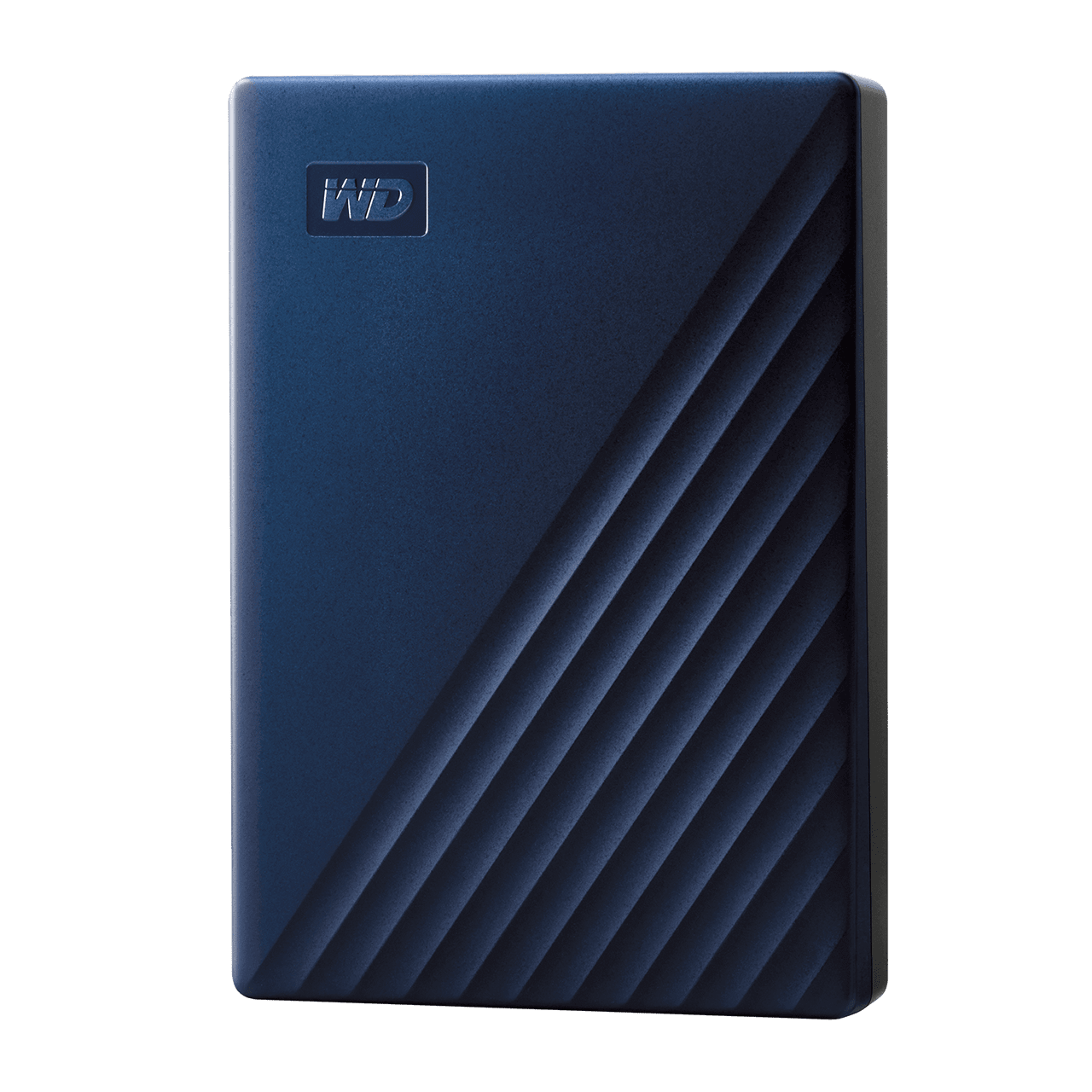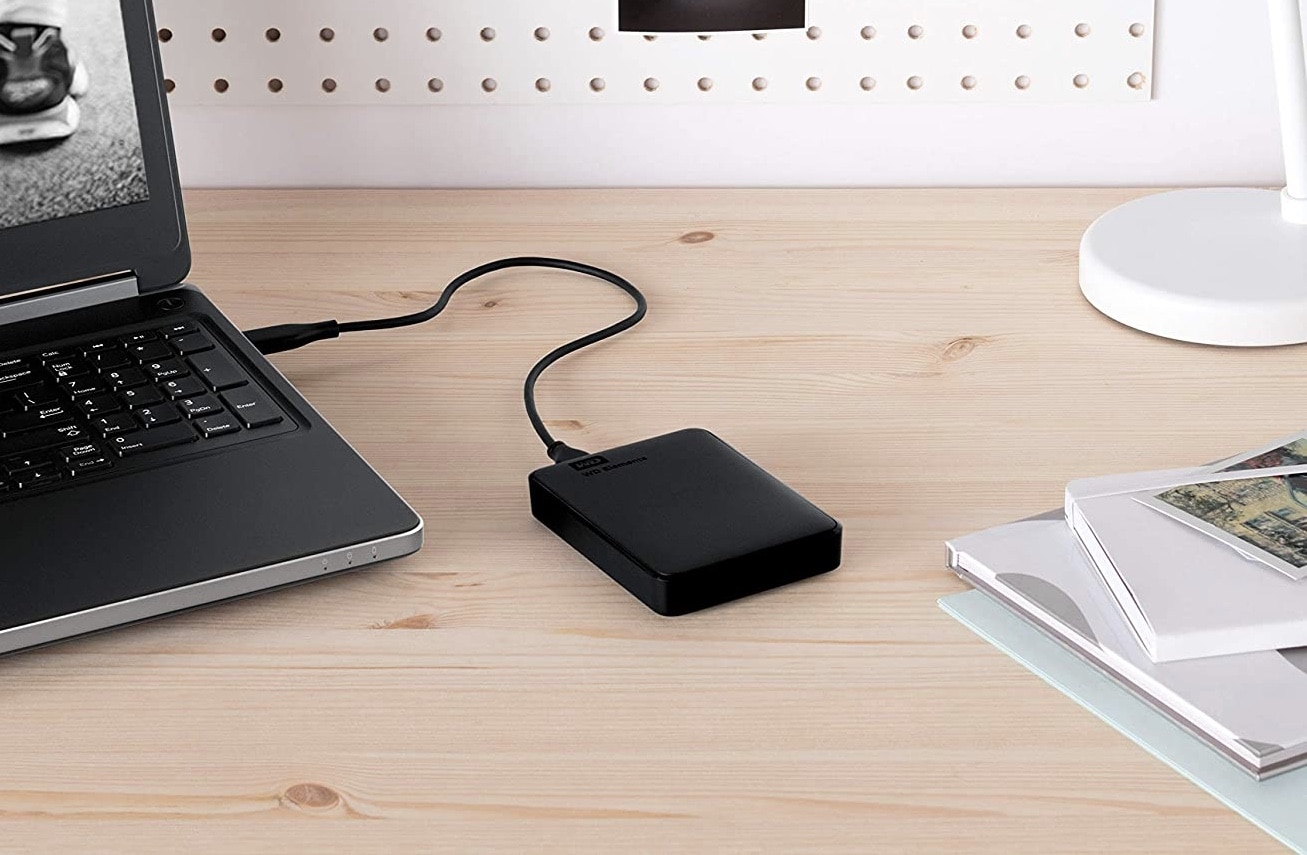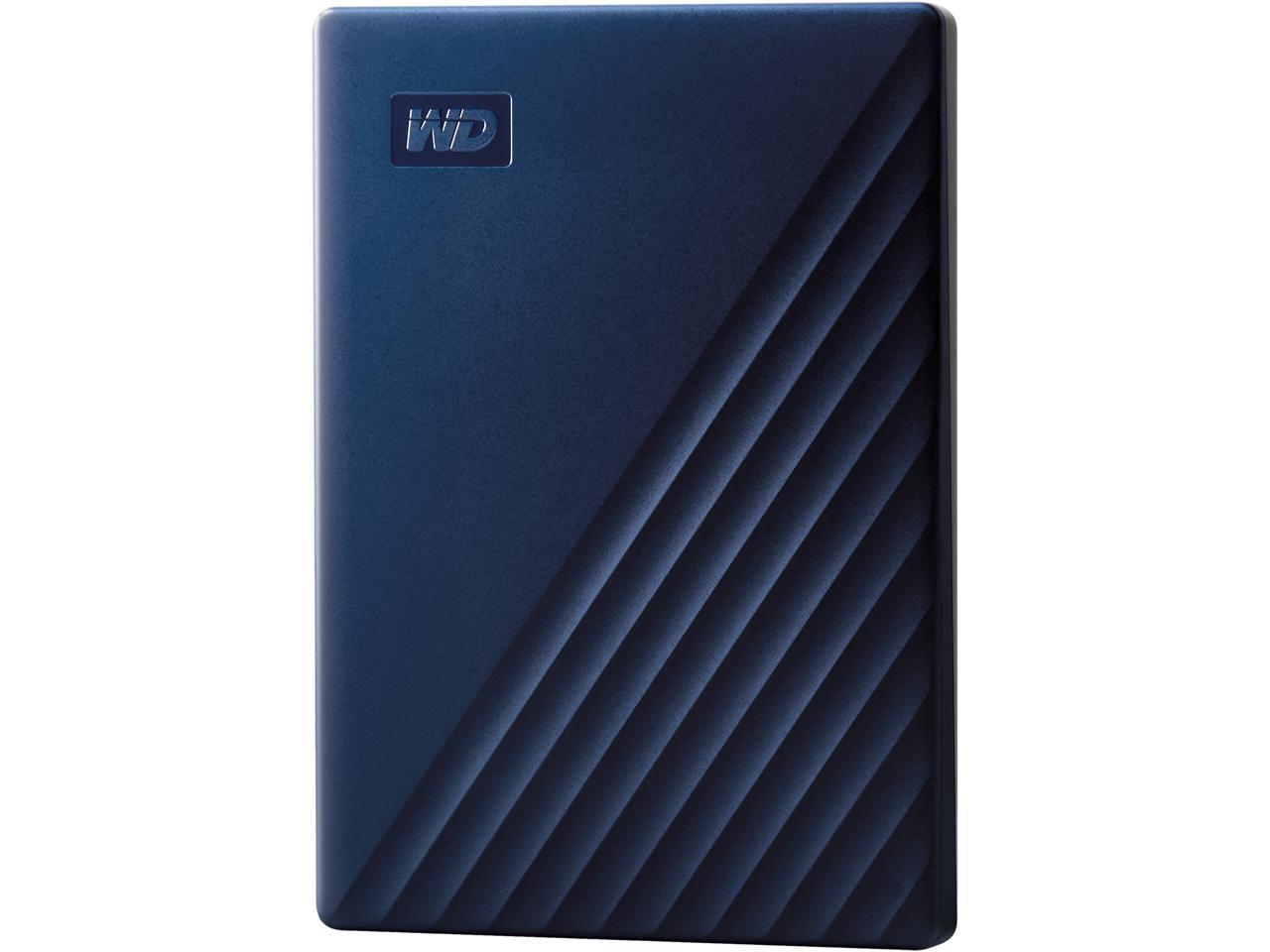Upgrade Your SSD. The most radical option to expand your MacBook’s storage is to upgrade its. LaCie d2 Professional 8TB External Hard Drive Portable Desktop HDD – USB-C USB 3.0, 7200 RPM Enterprise Class Drives, for Mac and PC Desktop, 1 month Adobe CC (STHA8000800) 4.3 out of 5 stars 191 $251.99 $ 251. 99 $299.94 $299.94.
Sep 16, 2020 • Filed to: Answer Hard Drive Problems • Proven solutions
We all treasure our precious data on our Mac. Therefore, we do not need to wait for a disaster to strike so that we can learn ways to backup files. One way to backup data is by copying them to an external hard drive. External hard drives are significant when your Mac has minimal storage since offers more storage. With this mind, you need to get yourself an external hard drive for Mac. Before purchasing an external drive for your mac, there are things you should consider such as compatibility, speed, storage, transfer speed, portability, and price. In this article, we are going to give you the best 5 external hard drives for mac picked by media websites.
- Top 5 Best External Hard Drives for Mac
- How to Recover Data from External Hard Drive
Part 1: Top 5 Best External Hard Drives for Mac
1.Seagate Backup Plus
Company: Seagate Technology
Seagate backup plus is an ideal mac external hard drive that is highly recommended by most websites. This external hard drive for mac is well known for its slim and sleek design. Its capacities are 500GB, 1TB, 2TB and latest 4TB. Moreover, it offers 200GB cloud storage that is limited for two years. However, this option may not be available in all countries. This external hard drive for Mac can be used interchangeably with Windows OS. Seagate backup plus is designed with three modes of connectivity namely, USB 2.0, USB 3.0, and thunderbolt. Seagate external hard drive for Mac is formatted to HFS+ file making it compatible with your MacBook or MacBook pro without formatting it. This drive has been recommended over 8 times by the chosen media websites.
Review:
Seagate Backup Plus drives make your life simple with its huge capacity storage. These external hard drives for Mac are well integrated with Backup software. It also offers a two-year 200GB cloud storage to Microsoft OneDrive. The only flaw of this software is that it lacks security options to protect data.
Rating: 4/5 stars
Price: $76.99 for 2TB as listed on Amazon
Recommended by: www.cnet.com
2. Western Digital My Passport Ultra external hard drive for mac
Company: Western Digital Corporation
Western Digital My Passport is another best external hard drive for mac. It has been recommended over 8 times on the selected 10 media websites. It offers minimal storage as low as 500GB, 1TB, and as high as 3TB. This external hard for Mac comes with a 3-year warranty. Moreover, it offers two connectivity modes that are USB 2.0 and USB 3.0 that enable data transfer faster. This Western digital external hard drive for Mac is compatible with Windows operating after formatting it to a supported file system such as FAT or NTFS format. The good thing about this external head drive for mac is that it allows you to encrypt and protect its hardware with a password.
Review
WD My Passport Ultra is one of the best external hard drives for Mac that offers a high transfer speed with different size capacities. Its price is slightly higher as compared to other external drives.
Rating: 4/5 stars
Price: $74.99 for 2TB as listed on Amazon
Recommended by: www.pcmag.com
Portable Hard Drive For Mac And Pc
3. Toshiba Canvio Slim II
Company: Toshiba Corporation
Another portable external hard drive for your Mac is Toshiba Canvio Slim II. It is compatible with Mac OS x. It comes with 500 GB and 1TB storage making it vital to use to backup data as well as transfer data. This external hard drive mac offers you a 10GB free cloud storage to backup all your videos, photos, music, documents, and important files. It allows you to backup mobile content. It is USB 3.0 connectivity and USB 2.o which worth mentioning. Toshiba external hard drive is well furnished with aluminum. It has been recommended over 6 times by the selected media websites.
Review

Toshiba Canvio Slim is a useful external hard drive that offers a bigger storage capacity besides its large backup storage. It also has a password feature that ensures that your data is protected around the clock. Its USB2.0 connectivity performance is not up to par.

Rating: 4/5 stars
Price: $79.99 for 2TB as listed on Amazon
Recommended by: www.thewirecutter.com
4. G-Technology G-Drive Slim
Company: G- Technology.
Just as the name suggests, this external hard drive for mac is slimmer than the other mentioned hard dive. It records a high speed and excellent performance. G-Drive slim which people who are looking for external storage to save pictures photos and music with a maximum storage of 500GB. It uses a USB 3.0 and USB 2.0 cable connectivity. Moreover, its transfer goes up to 125mb/s, which seems a high speed when you are transferring files. This Mac external hard drive is formatted with the HFS+ files system making it compatible with MacBook, MacBook Pro, and MacBook Air. Furthermore, it comes with a 3-year limited warranty. G-Technology G-Drive Slim has an aluminum casing and a plastic case around the USB port. It is light thus convenient to carry it around. At least 4 media websites from the selected 10 recommended it.
Review
G-Technology G-Drive Slim is a speedy external hard drive for your Mac. It records high transfer and read speed as compared to any USB 3.0mac external hard drive. To add on it is portable and offers enough external storage. One demerit of this external hard drive for mac is that it does not come with any packaged software.
Rating: 4/5
Price: $69.95 for 1TB as listed on Amazon
Recommended by: www.pcmag.com
5. Transcend StoreJet

Fastest External Drive For Mac
Company: Transcend Information
If you are looking for a Mac external hard drive, that lets backup files within a click, then look no more. Transcend StoreJet will exactly do that. This software is well designed and integrated with a military shock resistant. You can quickly transfer your data files from Mac to this external hard drive mac either with UB 2.0 or USB 3.0 connectivity. Transcend Jet external hard drives for mac are available in different capacities, which include 500GB, 750GB, 1TB, and 2TB. From the 10 sources, it has been mentioned at least three times.
Review
It is the best mac external hard drive especially for those people who travel more often. It has a silicone shell with an incredible casing that enables it to resist shock. Its performance is also good. However, this external hard drive for mac is slightly heavier as compared to other Mac external hard drives.
Rating: 4/5
Price: $69.95 for 1TB as listed on Amazon
Recommended by: www.techspot.com
Sources:
- http://www.cnet.com/topics/storage/best-hard-drives-and-storage/portable-drives/
- http://www.techradar.com/news/computing-components/storage/external-hard-drive-1292181
- http://www.pcmag.com/article2/0,2817,2400958,00.asp
- http://machmachines.com/best-external-hard-drive-mac-top-10/
- http://www.reviews.com/best-external-hard-drive/
- http://thewirecutter.com/reviews/best-portable-hard-drive/
- http://external-hard-drive-review.toptenreviews.com/
- http://www.macworld.com/product/collection/3326/portableharddrives.html
- http://bootableusb.net/top-10-external-hard-drives/
- http://www.digitaltrends.com/computing/best-external-hard-drives/
- http://www.t3.com/features/best-external-hard-drives-to-buy
Top 5 Best Free Hard Drive Data Recovery Software in 2020
Part 2: How to Recover Data from External Hard Drive
With an external hard drive for Mac, people are used to storing their business data or personal data on it. However, the wrong protection will cause the data lost from your external hard drive. As accidentally deleted data, lost or formatted data from the external hard drive. Under these circumstances, you will need an external hard drive data recovery tool to help you retrieve your lost data from the external hard drive.
Your Safe & Reliable External Hard Drive Recovery Software
- Recover lost or deleted files, photos, audio, music, emails from any storage device effectively, safely, and completely.
- Supports data recovery from recycle bin, hard drive, memory card, flash drive, digital camera, and camcorders.
- Supports to recover data for sudden deletion, formatting, hard drive corruption, virus attack, system crash under different situations.

Recoverit External Hard Drive Data Recovery capable of restoring deleted/lost files or formatted partition from external hard drive, hard drive (HDD and SSD), USB flash drive, memory card, digital camera, camcorder, iPod, Music Player, and many kinds of mobile devices (Nokia, Blackberry phones and Phones with older Android OS than ICS).
How to recover data from external hard drive on Mac
Download and install Recoverit data recovery on your computer, connect your external hard drive to the computer. Follow the next simple steps to retrieve your data back.
Step 1: Launch Recoverit data recovery, please select a data recovery mode. To recover data from external hard drives, you can select the 'External Devices Recovery' mode to start.
Please make sure your external hard drive has connected to your computer, click the 'Next' button to process.
Step 2: Please select your external hard drive to scan lost data. Click the 'Start' button to finding data.
Step 3: Recoverit data recovery will start a quick scan to search for lost data. You can preview some recoverable files after the scan. If you cannot find your files, you can go to scan again with the 'All-Around Recovery' mode.
Step 4: With the 'All-Around Recovery' mode which can help you deeply search and scan more files from the external hard drive. While it will take more time to complete the scan.
Step 5: After the scan, you can check all the recoverable files. Go to preview some specific recoverable files and click the 'Recover' button to get your data back.
What's Wrong with Drive
- Recover Your Drive
- Fix Your Drive
- Format/Wipe Drive
- Know Your Drive
Optimized Storage in macOS Sierra and later* can save space by storing your content in iCloud and making it available on demand. When storage space is needed, files, photos, movies, email attachments, and other files that you seldom use are stored in iCloud automatically. Each file stays right where you last saved it, and downloads when you open it. Files that you’ve used recently remain on your Mac, along with optimized versions of your photos.
* If you haven't yet upgraded to macOS Sierra or later, learn about other ways to free up storage space.
Find out how much storage is available on your Mac
Choose Apple menu > About This Mac, then click Storage. Each segment of the bar is an estimate of the storage space used by a category of files. Move your pointer over each segment for more detail.
Click the Manage button to open the Storage Management window, pictured below. This button is available only in macOS Sierra or later.
Manage storage on your Mac
The Storage Management window offers recommendations for optimizing your storage. If some recommendations are already turned on, you will see fewer recommendations.
Store in iCloud
Click the Store in iCloud button, then choose from these options:
- Desktop and Documents. Store all files from these two locations in iCloud Drive. When storage space is needed, only the files you recently opened are kept on your Mac, so that you can easily work offline. Files stored only in iCloud show a download icon , which you can double-click to download the original file. Learn more about this feature.
- Photos. Store all original, full-resolution photos and videos in iCloud Photos. When storage space is needed, only space-saving (optimized) versions of photos are kept on your Mac. To download the original photo or video, just open it.
- Messages. Store all messages and attachments in iCloud. When storage space is needed, only the messages and attachments you recently opened are kept on your Mac. Learn more about Messages in iCloud.
Wd Mac External Hard Drive
Storing files in iCloud uses the storage space in your iCloud storage plan. If you reach or exceed your iCloud storage limit, you can either buy more iCloud storage or make more iCloud storage available. iCloud storage starts at 50GB for $0.99 (USD) a month, and you can purchase additional storage directly from your Apple device. Learn more about prices in your region.
Optimize Storage
Click the Optimize button, then choose from these options.
- Automatically remove watched movies and TV shows. When storage space is needed, movies or TV shows that you purchased from the iTunes Store and already watched are removed from your Mac. Click the download icon next to a movie or TV show to download it again.
- Download only recent attachments. Mail automatically downloads only the attachments that you recently received. You can manually download any attachments at any time by opening the email or attachment, or saving the attachment to your Mac.
- Don't automatically download attachments. Mail downloads an attachment only when you open the email or attachment, or save the attachment to your Mac.
Optimizing storage for movies, TV shows, and email attachments doesn't require iCloud storage space.
Empty Trash Automatically
Empty Trash Automatically permanently deletes files that have been in the Trash for more than 30 days.
Reduce Clutter
Reduce Clutter helps you to identify large files and files you might no longer need. Click the Review Files button, then choose any of the file categories in the sidebar, such as Applications, Documents, Music Creation, or Trash.
You can delete the files in some categories directly from this window. Other categories show the total storage space used by the files in each app. You can then open the app and decide whether to delete files from within it.
Learn how to redownload apps, music, movies, TV shows, and books.
Where to find the settings for each feature
The button for each recommendation in the Storage Management window affects one or more settings in other apps. You can also control those settings directly within each app.
- If you're using macOS Catalina, choose Apple menu > System Preferences, click Apple ID, then select iCloud in the sidebar: Store in iCloud turns on the Optimize Mac Storage setting on the right. Then click Options next to iCloud Drive: Store in iCloud turns on the Desktop & Documents Folders setting. To turn off iCloud Drive entirely, deselect iCloud Drive.
In macOS Mojave or earlier, choose Apple menu > System Preferences, click iCloud, then click Options next to iCloud Drive. Store in iCloud turns on the Desktop & Documents Folders and Optimize Mac Storage settings. - In Photos, choose Photos > Preferences, then click iCloud. Store in iCloud selects iCloud Photos and Optimize Mac Storage.
- In Messages, choose Messages > Preferences, then click iMessage. Store in iCloud selects Enable Messages in iCloud.
- If you're using macOS Catalina, open the Apple TV app, choose TV > Preferences from the menu bar, then click Files. Optimize Storage selects “Automatically delete watched movies and TV shows.”
In macOS Mojave or earlier, open iTunes, choose iTunes > Preferences from the menu bar, then click Advanced. Optimize Storage selects “Automatically delete watched movies and TV shows.” - In Mail, choose Mail > Preferences from the menu bar, then click Accounts. In the Account Information section on the right, Optimize Storage sets the Download Attachments menu to either Recent or None.
Empty Trash Automatically: From the Finder, choose Finder > Preferences, then click Advanced. Empty Trash Automatically selects “Remove items from the Trash after 30 days.”
Other ways that macOS helps automatically save space
With macOS Sierra or later, your Mac automatically takes these additional steps to save storage space:
- Detects duplicate downloads in Safari, keeping only the most recent version of the download
- Reminds you to delete used app installers
- Removes old fonts, languages, and dictionaries that aren't being used
- Clears caches, logs, and other unnecessary data when storage space is needed
How to free up storage space manually
Even without using the Optimized Storage features of Sierra or later, you can take other steps to make more storage space available:
- Music, movies, and other media can use a lot of storage space. Learn how to delete music, movies, and TV shows from your device.
- Delete other files that you no longer need by moving them to the Trash, then emptying the Trash. The Downloads folder is good place to look for files that you might no longer need.
- Move files to an external storage device.
- Compress files.
- Delete unneeded email: In the Mail app, choose Mailbox > Erase Junk Mail. If you no longer need the email in your Trash mailbox, choose Mailbox > Erase Deleted Items.
Learn more
- The Storage pane of About This Mac is the best way to determine the amount of storage space available on your Mac. Disk Utility and other apps might show storage categories such as Not Mounted, VM, Recovery, Other Volumes, Free, or Purgeable. Don't rely on these categories to understand how to free up storage space or how much storage space is available for your data.
- When you duplicate a file on an APFS-formatted volume, that file doesn't use additional storage space on the volume. Deleting a duplicate file frees up only the space required by any data you might have added to the duplicate. If you no longer need any copies of the file, you can recover all of the storage space by deleting both the duplicate and the original file.
- If you're using a pro app and Optimize Mac Storage, learn how to make sure that your projects are always on your Mac and able to access their files.
